Local News
The Last Lap Part II: A life’s work
Published
2 years agoon
A veteran patroller’s respect for Lone Mountain’s hazard, and a mechanic’s reflection on ‘the heart of the mountain’
“The Last Lap” is a three-part series commemorating the origins, glory years and final days of a defining era for American skiing.
By Jack Reaney STAFF WRITER
Mike Buotte, Big Sky Ski Patrol’s director of snow safety, first became a Big Sky ski patroller in the winter of 1994-95—just before construction began on the ambitious tram.
As a rookie, Buotte believes his backcountry skiing knowledge and youthful ambition earned respect from veteran patrollers who took him under their wing. Almost immediately, he helped Big Sky Resort open some of the most unique and hazardous inbounds terrain in the United States.
Part one of this series highlighted the peak-hiking and tram-welding days of Montana ski-legend Tom Jungst. In part three, EBS speaks with the Big Sky community during the tram’s final weeks.
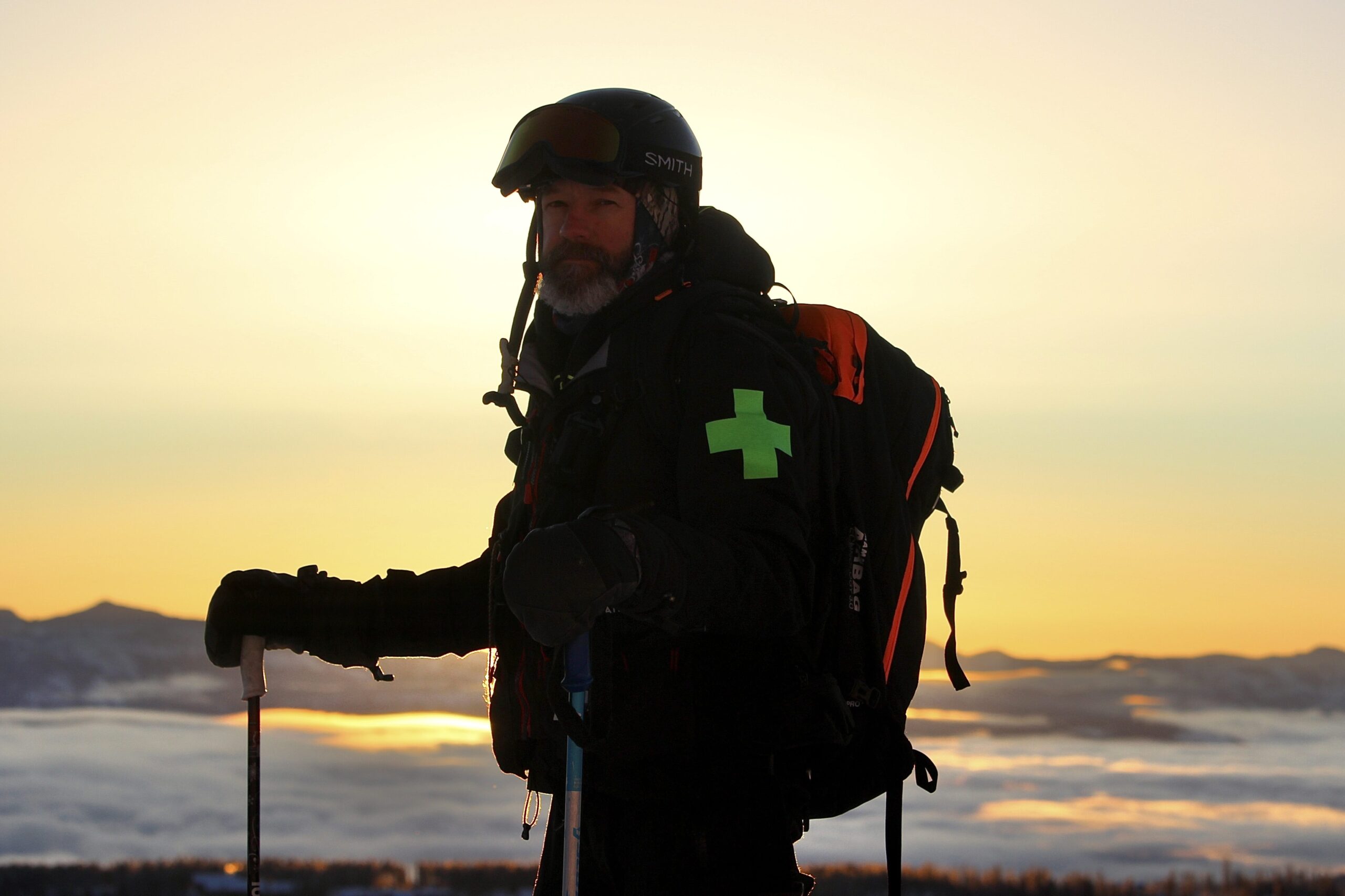
“On a personal level, [the tram] meant incredible opportunity to me,” Buotte told Explore Big Sky in a November 2022 phone interview. “I was at the right place at the right time as a young, gung-ho patroller and backcountry skier who was very into the mountains. That tram provided access to a real mountain, and that was exciting and challenging. It turned into my life’s work.”
Buotte also said it’s time for a new tram.
“That tram’s been really, really good to us,” he said. “We haven’t had—I shouldn’t say this—we haven’t had to evacuate that tram.”
Buotte—pronounced BE-ott—said it’s been a pretty stable machine for 26 years and it represented “a giant step forward for inbounds skiing in the United States.”
Back in the early ‘90s, Buotte said that the Gallatin National Forest Avalanche Center was a brand new two-person operation, and patrollers were trained “on the job” for snow safety. Patrollers are far more qualified now, he said. Before Thanksgiving, Buotte led “all patrol day” at Lone Mountain to help teams from all over Montana shake off the rust.
Around that time, Buotte and a core group of seasoned avalanche mitigation professionals “got the first shots on the mountain” and analyzed the snowpack.
He said this season’s early snow was akin to 1995.
“It snowed early, it snowed often, and it didn’t stop,” Buotte recalled. The tram wasn’t ready for patrol use until mid-December, and by that time, he said the snowpack was “mature” and probably hadn’t seen a single explosive.
Thankfully, the 1995-96 snowpack settled without a weak layer. There wasn’t a single deep slab avalanche in the tram’s first season, Buotte said.
That changed the following year.
‘The reality of what’s going on’
“In Big Sky and around Montana, [’96 and ’97] has never been topped in terms of snowfall,” Buotte said. Unfortunately, a “killer ice layer on the bottom of the snowpack” caused problems in the tram’s second season.
On Christmas Day, 1996, a patroller died in an explosive accident near the summit of Lone Mountain. Buotte says it was traumatic for the entire team.
The next morning, patrol triggered a “wall-to-wall” avalanche across Lenin and the Dictator Chutes. The slide infamously took out the Shedhorn chairlift, leaving scars still visible today.
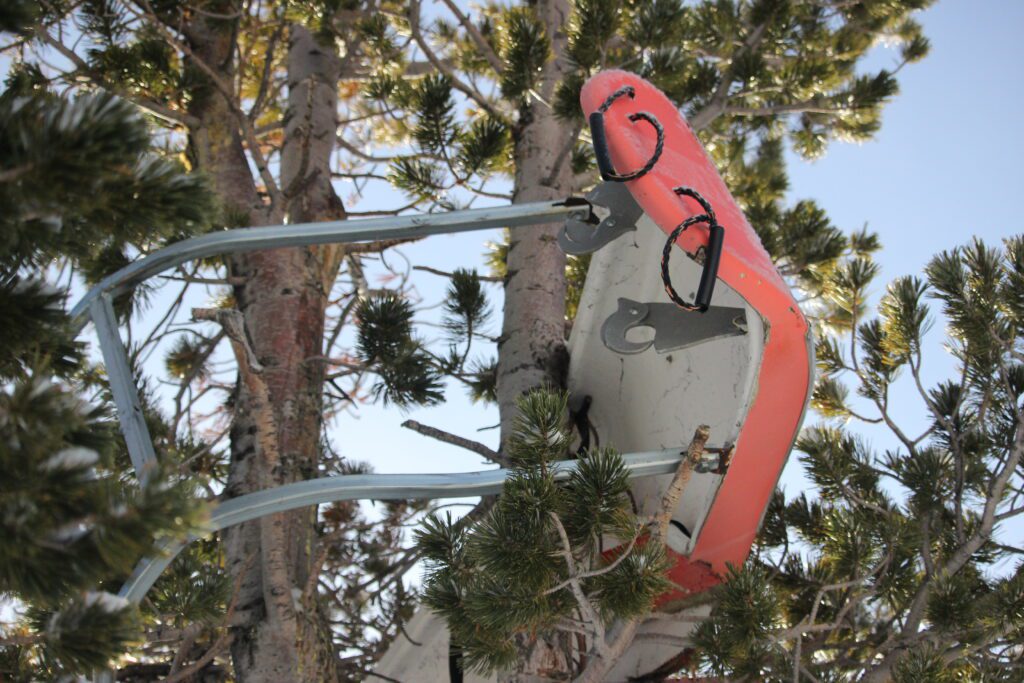

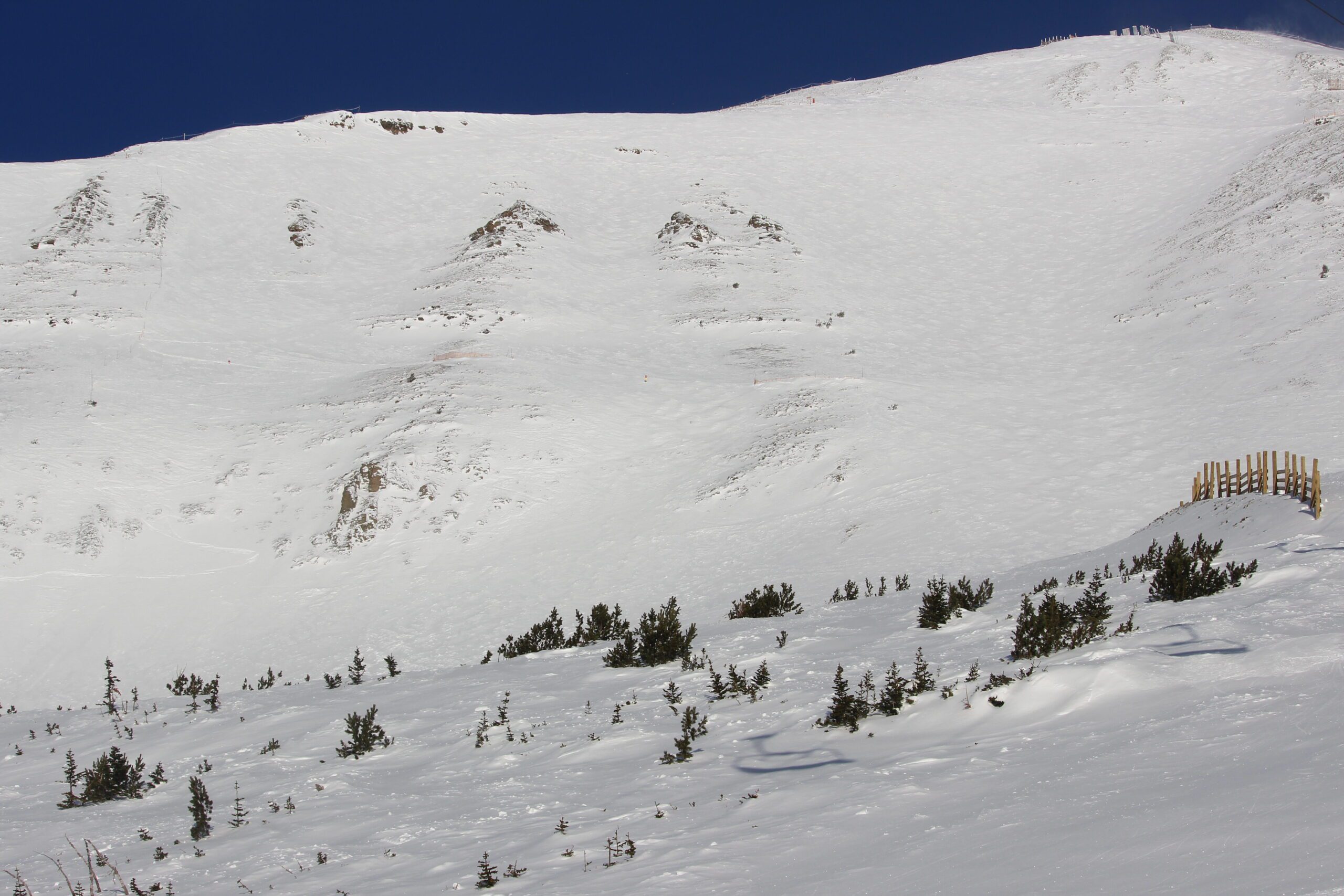

Buotte and another patroller were caught in that avalanche. Miraculously, they both stopped. Had they “taken the ride,” Buotte is confident they would not have survived.
“That second year, the reality of what’s going on really hit us,” Buotte said. “And it was not fun and games. It was pretty dark, frankly. That’s when it got very real for the organization and for me. The industry changed; avalanche training changed. We had to up our game. It was a new paradigm.”
Buotte said patrol changed the Lenin route’s design—adding more separation in time and space—and applied the same learning to other routes. Mitigation work is inherently dangerous, but Buotte believes the close call helped emphasize the importance of route structure to reduce risk.
“That tram provided access to a real mountain, and that was exciting and challenging. It turned into my life’s work.”
MIKE BUOTTE
Even before the tram was built, he remembers industry experts saying, ‘it won’t work,’ and ‘it’s too dangerous,’ and ‘the weather is too crazy.’ Serious doubts circulated when an inbounds slab nearly claimed the lives of two professionals while pummeling the chairlift built to complement tram-served terrain.
“It was really freakin’ hard,” Buotte said. “But the challenge is what kept [patrollers] coming back, year after year, trying to improve. That’s what’s incredibly satisfying to me personally, now, looking back to where we started as an organization and a ski patrol, and where we are now.”
Spirit and superstition
Buotte talks to Lone Mountain, thanking it often.
“I pick up every piece of trash that I see on the mountain when I’m skiing around—not to make the resort prettier, but to respect the mountain. I’ve stopped, sidestepped up the mountain to pick up that granola bar wrapper or water bottle or whatever.
“That’s what I do to kind of try to honor the mountain and to hope that it doesn’t kill me,” he said, laughing.
In his 28-year career, he said he’s never heard another patroller voice a superstition about the tram. However, Buotte still feels the power of the machine. He said that initially, everyone was “freakin’ intrigued” by the Lone Peak Tram.
“One thing I used to love to do, especially in the early years of the tram, I would go into the motor room when the tram was taking off and watch the bottom bull wheel go into slow motion. And as it sped up, I used to love watching it reach full speed and watching the hydraulic ram move as the cars got into the middle of the span… I used to love to stand in that motor room and watch that bull wheel spin.”
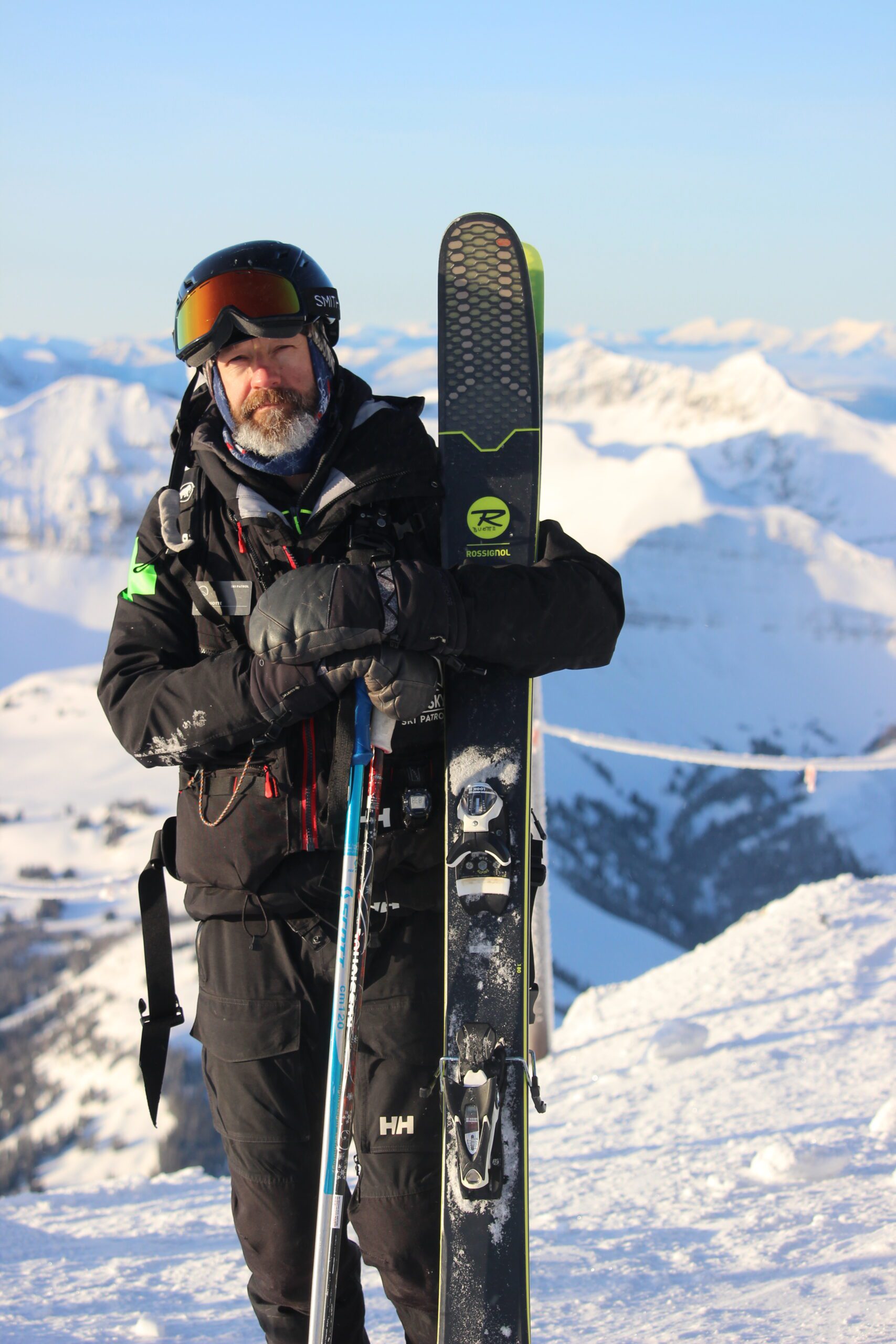

Buotte believes the tram creates a rare undercurrent of respect, especially between patrollers, locals and lift maintenance.
“Just about everybody who has skied up there a lot has gotten the s*** scared out of them at some point,” he said. “The possibility of serious consequences is there, and I think it has engendered a certain amount of respect for the mountain… If two groups of people respect the same thing, there’s a level of camaraderie and kinship.
“There’s no place we’d rather be than the tram. What a great lift—what a singular lift.”
When asked to estimate his total number of rides, Buotte said he’d need to do some math. He said he hates to exaggerate, and at Big Sky, he usually doesn’t need to.
In a follow-up, Buotte reported he’s ridden the tram a minimum of 5,600 times. In a second follow-up, he revised that number to 5,000 for further fear of exaggerating.
He also mentioned a sticker that says: “LIFT MAINTENANCE—because ski patrol needs heroes too.”
Laurel Blessley, Big Sky Resort’s director of lift maintenance, sees that sticker around sometimes. She agreed with Buotte that difficult, occasionally dangerous working conditions forge trust between lift maintenance and ski patrol.
“They need us for the lifts, and we need them to keep the mountain safe,” she said. “It takes all of us.”
Driving blind
Blessley spoke with EBS in the control room in the tram’s bottom station, over the hum of the 27-year-old machine. She occasionally paused to hear a radio call, or reached back to press a button as she spoke.
She joined lift operations in 2000, switched to lift maintenance in 2002 and became tram supervisor in 2003—the tram was operated by lift maintenance until lift operations took over around 2007. As supervisor, she said it was a lot of ‘learn-as-you-go.’
“I was real green. Never really been on a [snowmobile] very much,” she said.
Snowmobiling became a part of her daily routine as she fired up Swift Current, Lone Peak Triple (now Powder Seeker) and the tram as part of her pre-dawn route for 13 years. It turns out, navigating Upper Morningstar in the dark is challenging.
“After years and years, I could probably do it with my eyes closed,” she said. “Back then, our snowmobiles weren’t as high quality. It was easy to get stuck on the headwall, easy to get off-course.”
She explained how she’d find her way up by following a series of four reflectors mounted on poles; when she lost sight of a reflector, she said, “you could look down and see the corduroy lines. Then you knew you were going the right way, unless it was a new cat-op who got lost too. I’ve been stuffed in the bottom of the A-Zs from that as well.”
Blessley’s been working on the tram for 20 years, almost half her life.
“I would do my thing, run the rescue rope, get the ice off the rescue rope and get the lift ready for the day,” Blessley said. “But I had almost an hour to myself up here, just me and the mountain. I feel lucky to have had that for so long.”
LAUREL BLESSLEY
Projects included changing the haul rope in 2008 and 2017, rebuilding the gearbox in 2019 and removing and replacing the electric motor in 2009. It helped her grow as a person, teaching her adaptability, resilience and confidence—especially confidence under pressure, as her team needed to persevere through terrible weather and trial and error of solving problems unique to a one-of-a-kind jigback gondola.
The Lone Peak Tram does have at least a younger sibling: the nearly identical Allen Peak Tram at Snowbasin, Utah, was another jigback gondola “tram” built for the 2002 Olympics. But the Allen Peak Tram climbs roughly one-third the height—508 versus 1,450 vertical feet—and it was not constructed on a slow-moving rock glacier.
‘Something needed to happen’
“This building is slowly moving downhill,” Blessley said of the tram’s bottom station, estimating about “20-ish” feet since 1995. “The back right is dipping more than the back left, so the tram is moving backwards and down a little, which is causing alignment issues that we mitigate often.”
Recently, Doppelmayr made custom parts to align the tram’s haul line with the groove of the shiv wheels. Blessley confirmed that Doppelmayr built the Lone Peak Tram knowing that the bottom station was on a rock glacier but not knowing how much the mountain would move. She said the lack of towers helped the tram exceed its life expectancy.
“I believe Doppelmayr guaranteed about 10 years,” Blessley said of the 27-year-old tram. “Might have been 15.”
By 2023, if skiers feel off-balance while loading the tram car, it’s not just nerves; the terminal is noticeably tilted, and Blessley pointed out how water collects in the loading dock where it used to drain. That’s not to mention outdated controls, she added.
In terms of retiring the Lone Peak Tram, she said something needed to happen.
“The new machine is really exciting for us,” she said. “It [will be] a true tram. It’s a huge installation that we’re really excited for. But I can say personally, I’m also really sad because… this tram has just been such a huge part of my life for so long.”
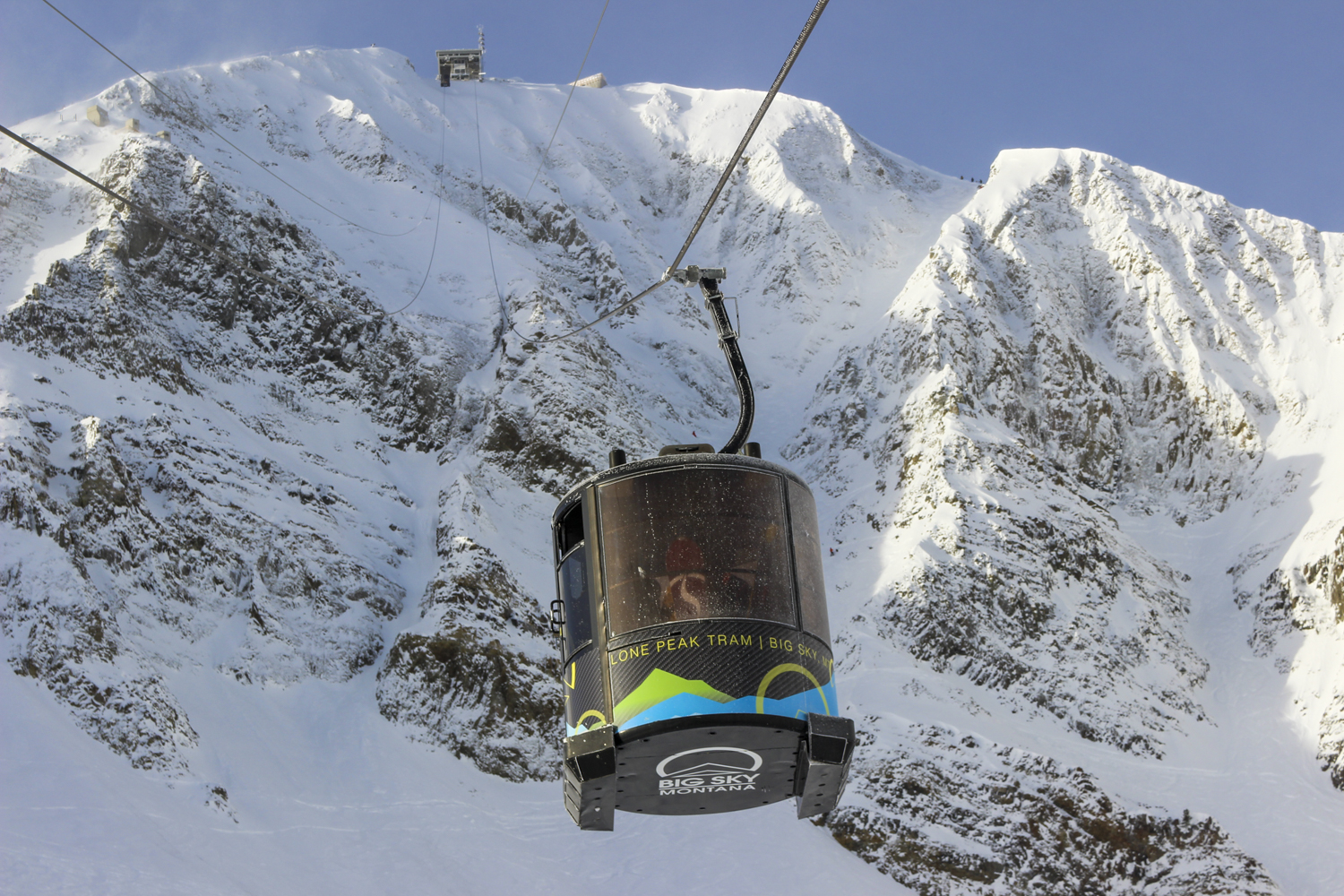

Blessley even tattooed the Lone Peak Tram on her right arm in 2006.
“[At] the tram base here, you feel like this is the heart of the mountain. Being up here every day in the winter and summer, it’s pretty special. The ride you take up this tram, you also feel like you’re going up the heart of the mountain.”
Blessley has spent thousands of hours looking out the window of the tram base, seeing people in the Big Couloir, descending the Gullies and Cron’s. She ridden “some of the most glorious runs of [her] life” before the tram opened to the public. She has fond memories of locals and friends tram-lapping in the April sun. And she remembers late-season tram-ops parties at the bottom station—even team sleepovers at 11,167 feet.


She gazed out from the control room where she watched the sun rise about a thousand times.
“I would do my thing, run the rescue rope, get the ice off the rescue rope and get the lift ready for the day,” Blessley said. “But I had almost an hour to myself up here, just me and the mountain. I feel lucky to have had that for so long.”
Her tattoo looks familiar for now. But for the next generation, including her 8-year-old daughter—Blessley believes her daughter is ready to take her first tram lap this season—the graphic might look foreign someday, a strange fixed-grip cylinder framing an unfamiliar perspective of Lone Mountain from a bygone era.
Note from Big Sky Resort: Every day, Big Sky Ski Patrol methodically assesses the snow stability on Lone Mountain. Opening high-alpine terrain with a high standard of safety requires extra careful work, both on the mountain and with data analysis. This takes diligence and patience. Please respect all closures on the mountain.
Jack Reaney is the Senior Editor for Explore Big Sky.


Upcoming Events
november, 2024
Event Type :
All
All
Arts
Education
Music
Other
Sports
Event Details
Spanish Classes with World Language InitiativeThese unique, no cost Spanish classes are made possible by the contribution of Yellowstone Club
more
Event Details
Spanish Classes with World Language InitiativeThese unique, no cost Spanish classes are made possible by the contribution of Yellowstone Club Community Foundation (YCCF) and Moonlight Community Foundation (MCF). This class will focus on building a lifelong affinity for world languages and cultures through dynamic and immersive Communicative Language teaching models.
Beginner Class – Mondays and Wednesdays from 5:30-6:30 pm
Intermediate Class – Mondays and Wednesdays from 6:45- 7:45 pm
- Classes begin Oct.7, 2024 and run for 6 weeks
- Class size is limited to 12 students
- Classes are held in Big Sky at the Big Sky Medical Center in the Community Room
For more information or to register follow the link below or at info@wlimt.org.
Time
October 7 (Monday) 5:30 pm - November 13 (Wednesday) 7:45 pm
Location
Big Sky Medical Center - Community Room (2nd Floor)
Big Sky Medical Center - Community Room (2nd Floor)
Event Details
Spanish Classes with World Language InitiativeThese unique, no cost Spanish classes are made possible by the contribution of Yellowstone Club
more
Event Details
Spanish Classes with World Language InitiativeThese unique, no cost Spanish classes are made possible by the contribution of Yellowstone Club Community Foundation (YCCF) and Moonlight Community Foundation (MCF). This class will focus on building a lifelong affinity for world languages and cultures through dynamic and immersive Communicative Language teaching models.
Beginner Class – Mondays and Wednesdays from 5:30-6:30 pm
Intermediate Class – Mondays and Wednesdays from 6:45- 7:45 pm
- Classes begin Oct.7, 2024 and run for 6 weeks
- Class size is limited to 12 students
- Classes are held in Big Sky at the Big Sky Medical Center in the Community Room
For more information or to register follow the link below or at info@wlimt.org.
Time
October 14 (Monday) 5:30 pm - November 20 (Wednesday) 7:45 pm
Location
Big Sky Medical Center - Community Room (2nd Floor)
Big Sky Medical Center - Community Room (2nd Floor)
Event Details
Youth Basketball is available for ages K-4th. Practice (Tues/Wed) and Game (Saturdays) Schedule: - Kindergarten: Tues. 4-5pm, Sat. 9-10am - Grades 1-2: Wed.
more
Event Details
Youth Basketball is available for ages K-4th.
Practice (Tues/Wed) and Game (Saturdays) Schedule:
– Kindergarten: Tues. 4-5pm, Sat. 9-10am
– Grades 1-2: Wed. 4-5pm, Sat. 10-11am
– Grades 3-4: Wed. 5-6pm, Sat. 11a-12p
-$35 player fee
-There will be no games on 10/19
-BASE pass is required
-All game spectators must check-in at the BASE front desk
For more info, e-mail Steven at sreid@bsco.org
Time
October 15 (Tuesday) 4:00 pm - November 16 (Saturday) 12:00 pm
Location
BASE
285 Simkins Dr









